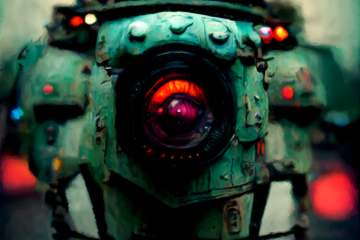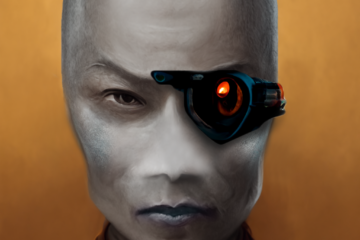Bridging to the Sequel
Over the years I’ve tried a few different writing styles. I’ve done seat of my pants adlib writing with no outline. I’ve done very detailed outlines and indepth character backgrounds. But what I’ve found that has worked best, for myself anyways, is closer to the “make it up as you go” approach.
It’s more enjoyable to write when you don’t know everything that is going to happen. A rigid outline and character charts feel like a restriction and don’t let the characters or the story evolve naturally. I enjoy the experiencing the story just as much as a reader the first and I much prefer that first experience to come during writing then before.
That said, there are a lot of drawbacks to it. You have a far greater chance to have confusing plots or missed opportunities when you don’t know where the plot is going. It also is much easier to get stuck when you write this way. If you don’t know where the story is going you can sit floundering for a long time.
I’ve adapted a merger of the two, outlining the broad strokes to a story and each characters development without going into to much detail. I’ve also made the important decision to view all pre-writing work as just a jumping off point. It helps get the ball rolling but I am not bound to it.
But even with this combination approach one of my personal biggest obstacles in writing in figuring out those bridge scenes. So what’s a bridge scene? It’s any scene between two that is essential but doesn’t, yet, have a purpose other than connecting two others. Jim Butcher describes them as sequel. Which is what they are, they are what comes after and where you explore and see how your characters react to the came before.
The reason I refer to them to as bridge scenes is because I don’t really know how my characters will react. This is the flaw of not developing things out before hand. You figure this stuff out in pre-writing when you do detailed outlines.
A bridge scene isn’t a sequel when you know where it needs to go and you know where it’s coming from, but you don’t really know what happens on the way. When you sit down to try and write it you don’t have any idea how to get from A to C. You need B but you don’t know anything about B and you can’t just ignore it.
If a scene feels like a bridge than it feels like a waste of time both to the reader and the writer. Figuring out where the problem lays is the most difficult part. Did scene A make no sense for the characters so that’s why you don’t know how they should react? Or does scene C no longer make sense as a destination? Does the story need to change? Or is the setting for the bridge just not necessary?
Sometimes you can solve this with a time jump. If your setting and events for B are irrelevant you might be able to ignore it and just make C your new sequel. The important part of B is exploring characters reaction and development after A. But sometimes C can handle both.
Unfortunately, that doesn’t always work. For example, look at Empire Strikes Back. You can’t go from Luke learning Darth Vader is his father and throwing himself off Cloud City to Luke getting his hand replaced on the Rebel fleet. You need the ‘how does he get there’ part. You need Leia to come to his rescue. Luke could react to the revelation about Darth Vader either place but he needs a bridge to get him between the two. So enter the Millenium Falcon. You see Luke’s reaction, making it the necessary sequel, but the scene is also about escaping the Empire and Artoo saving the day and Lando being lied too.
So suffice it to say I’m writing this so I can avoid figuring out how to turn my current bridge into a sequel. Should probably get back to that.


